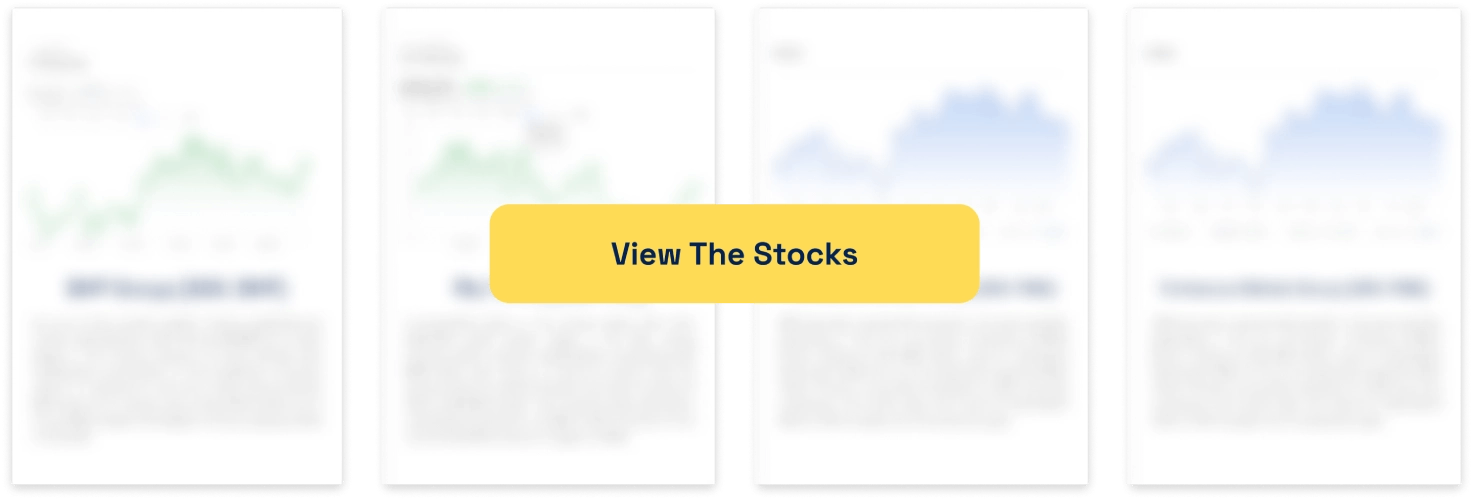How to Calculate How Many Shares You Can Buy: A Simple Guide for Investors
![]() Ujjwal Maheshwari, May 17, 2025
Ujjwal Maheshwari, May 17, 2025
If you’ve ever looked at the share market and wondered, “How many shares can I afford?”, you’re not alone. It’s a common question for both new and seasoned investors. Whether you’re investing in blue-chip shares on the ASX or looking to build a diversified portfolio, understanding how to calculate the number of shares you can buy is a foundational skill.
In our view, this is not just about simple arithmetic; it’s about making informed decisions based on your financial position, investment strategy, and market conditions. Knowing how many shares you can afford helps you stay within your budget while also ensuring you’re making the most of your capital.
What Are Shares and Why Do They Matter?
Shares represent partial ownership in a company. When you purchase a share, you’re essentially buying a small piece of that business. The value of your investment will rise or fall with the company’s performance and broader market sentiment.
But here’s the key question: Why does the number of shares you purchase matter? Simply put, the size of your shareholding affects your exposure to price movements, your voting rights (if applicable), and potential dividend returns. The more shares you own, the greater your potential gains (or losses), and the higher your voice within the company, especially in small-cap firms.
The Basic Formula to Calculate How Many Shares You Can Buy
Let’s keep this simple. The standard formula is:
Number of Shares = (Investment Amount – Brokerage Fee) ÷ Share Price
Let’s break that down with an example:
Investment Budget: $5,000
Share Price: $25
Brokerage Fee: $20
Number of Shares = ($5,000 – $20) ÷ $25 = 198 shares
It’s that straightforward, but that’s only the beginning. This formula gives you a good start, but it doesn’t factor in variables like currency exchange, minimum purchase limits, or tax implications.
Factors That Influence How Many Shares You Can Buy
Share Price
It sounds obvious, but the price of a single share dramatically influences your purchasing power. If the share price is high (say, CSL Ltd at over $241.82), you’ll end up with fewer shares than if you were buying a stock like Telstra, which trades around $4.53 per share. Share prices also vary throughout the trading day, so the price you see may not be the final price you pay. This fluctuation means you may end up with slightly fewer or more shares than planned.
Brokerage Fees
Every time you buy or sell shares, you’re likely paying a brokerage fee. These vary from platform to platform. CommSec charges around $10–$29.95 per trade, depending on your investment amount, while low-cost brokers like SelfWealth charge flat fees around $9.50. If you’re investing small amounts, brokerage fees can eat into your capital significantly. For example, if you invest $500 and pay a $20 brokerage fee, you’ve already lost 4% of your investment before purchasing any shares.
Account Minimums and Rounding
Some platforms round down your purchase to the nearest whole share. You can’t always buy fractional shares on the ASX unless you use specific platforms like Superhero or eToro. Always check the order execution policies. This can lead to leftover funds that remain in your account until your next trade. Over time, these can accumulate, but they won’t be working for you in the market.
Using Online Brokerage Platforms for Calculations
Most trading platforms now offer real-time calculators to estimate how many shares you can purchase. For example:
CommSec: Displays potential costs before you place a trade.
SelfWealth: Shows how brokerage fees impact the total number of shares.
Superhero: Allows for fractional investing with no brokerage on ASX ETFs.
Still, even with these tools, understanding the math behind the numbers gives you a clearer picture of your investment strategy. Don’t let the platform do all the thinking for you—you should still know how the figures work.
What About Buying ETFs or International Shares?
Buying ETFs or shares listed overseas follows a similar process, but adds complexity:
Currency exchange rates (especially for US stocks).
International brokerage fees.
Minimum investment thresholds on some platforms.
For example, if you’re buying an S&P 500 ETF on the NYSE, your $5,000 might convert to roughly $3,300 (after exchange rates and fees), which means fewer units, especially if you’re also paying per-trade USD fees. We believe it’s essential to include all these hidden costs to truly calculate how many shares you can afford overseas.
Calculating for Dollar-Cost Averaging (DCA) Strategy
If you invest regularly (say $500/month), use the same formula each time:
(Monthly Investment – Fees) ÷ Current Share Price = Shares Bought
Over time, this averages out your entry price. It’s a long-term strategy used widely across the globe, especially by younger investors who favour consistent growth over quick wins. DCA smooths out the impact of market volatility and removes the temptation to time the market.
Examples: Share Purchase Scenarios in the Australian Market
Scenario 1: Buying BHP Group Shares
Budget: $3,000
Share Price: $45
Brokerage: $15
Shares = ($3,000 – $15) ÷ $45 = 66.3 shares → You can buy 66 shares
Your leftover amount remains as buying power for the next trade.
Scenario 2: Investing in a Low-Priced Tech Stock
Budget: $1,000
Share Price: $2
Brokerage: $10
Shares = ($1,000 – $10) ÷ $2 = 495 shares
You’ve bought more shares, but your investment is riskier. That’s the trade-off. These examples show that share quantity alone doesn’t indicate investment quality. Always look at company fundamentals, not just price.
How to Optimise Your Share Buying Strategy
We’re not talking about guesswork here—we’re talking strategy. So, how can you get the most out of your budget?
Minimise fees: Use low-cost brokers, especially for smaller trades.
Batch purchases: Instead of frequent small buys, consider fewer large ones to reduce total brokerage impact.
Track market trends: Tools like Morningstar or ASX announcements help track stock volatility.
In our experience, disciplined investing trumps impulsive decisions every single time. Planning before executing a trade results in fewer mistakes and more consistent returns.
Tools That Can Help
Consider using the following tools to make your calculations even easier:
Sharesight: Portfolio tracking with cost basis calculations.
ASX calculators: Offers investment planning tools directly from the ASX website.
Google Sheets/Excel: Great for custom calculators. Add fields for brokerage, currency conversion, and more.
We’re not saying you have to be a spreadsheet whiz, but even a basic table can give you insights others miss.
Tax Considerations When Buying Shares
You may not think about tax upfront, but it plays a key role in your buying decisions:
Capital Gains Tax (CGT) applies when you sell shares at a profit.
Dividend income is taxable, though franked dividends may offer credits.
Record keeping is essential—maintain purchase records for future tax reporting.
For specific advice, refer to the Australian Taxation Office (ATO) or consult a financial adviser. You’ll thank yourself later during tax season.
Avoid These Common Mistakes
It’s tempting to jump straight into buying shares, but consider the risks. Here’s what we’ve seen trip up new investors:
Ignoring brokerage fees: These eat into small investment returns.
Chasing low-priced shares: Cheap doesn’t always mean good value.
Overbuying on leverage: If using margin loans, miscalculating share quantity could magnify losses.
What’s the lesson? Always double-check your calculations and never invest beyond your means.
How This Applies to Superannuation and SMSFs
If you’re investing through a self-managed super fund (SMSF) or your superannuation provider offers direct share access, the process of calculating share quantity is the same, but documentation and tax compliance become more important. Ensure your investment fits within your fund’s investment strategy, and always maintain accurate records. This is not only for compliance but also for strategic review during financial planning reviews.
Future Outlook: More Fractional Investing Ahead?
We believe the Australian market is gradually moving towards fractional investing. As brokers respond to demands for accessibility, especially from younger investors, we expect more platforms to allow partial share ownership, making calculations even more precise and inclusive.
Platforms like Superhero and Pearler are already shaping this change, offering fractional ETFs and U.S. shares. It’s only a matter of time before more brokers follow.
Final Thoughts: Make Every Dollar Count
Calculating how many shares you can buy is more than just crunching numbers—it’s about maximising your financial strategy. Whether you’re purchasing shares in major Australian companies like BHP or CSL, or venturing into ETFs and global markets, understanding the formula ensures you never invest blindly.
In our view, the smartest investors aren’t the ones with the most money—they’re the ones who make every dollar count. They calculate, plan, and execute with intention.
What are the Best ASX Mining Stocks to invest in right now?
Check our buy/sell tips
FAQs
- How do I calculate how many shares I can afford?
Subtract brokerage fees from your investment budget, then divide by the current share price. This gives you the number of shares you can buy.
- Can I buy fractional shares in Australia?
Some platforms like Superhero and eToro offer fractional investing in ETFs or U.S. stocks, but most ASX shares still require full-unit purchases.
- Do brokerage fees apply every time I buy shares?
Yes, brokers typically charge a fee per trade, whether you’re buying or selling. These should always be included in your calculations.
- What happens to leftover funds if I can’t buy a full share?
They remain in your brokerage account as unused cash and can be used in your next purchase.
- Is it better to buy more low-cost shares or fewer high-value ones?
0It depends on your risk appetite and investment goals. Higher-priced shares often represent more established companies, while low-cost ones may carry higher volatility.
Blog Categories
Get Our Top 5 ASX Stocks for FY26
Recent Posts
Pfizer (NYSE:PFE) shares are still declining post-pandemic! Does the company have a future?
The dream run Pfizer had during the pandemic was not going to last forever. But while certain companies that derived…
The RBNZ is cutting rates again, and here are 5 ASX stocks (based in New Zealand) that could benefit
Last week, we heard that the RBNZ is cutting rates again. If you thought Australia’s economy was not doing well,…
China Stimulus Hope Fades: What It Means for ASX Iron Ore Giants
The Australian mining sector, particularly the iron ore giants, is undergoing a period of uncertainty, marked by the fading hopes…



